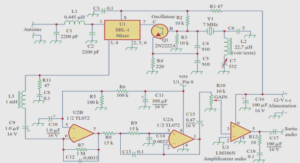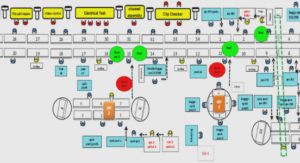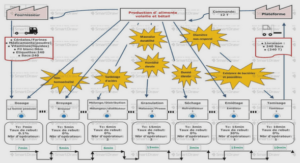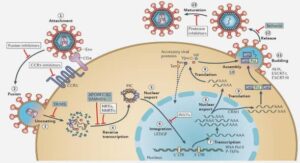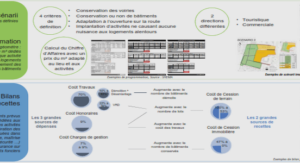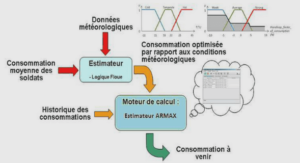Biogeochemical cycles Mediterranean Sea climatologies and budget
The Mediterranean Sea is characterized by complex climatic characteristics, a well-developed thermohaline circulation at the scale of the western and eastern basins and energetic gyre and jet systems at sub-basin scale. These characteristics impact on the hydrological, biogeochemical and biological water mass properties. A ten years 1/12° offline simulation of the biogeochemical cycles of the Mediterranean Sea was performed using the ECO3M-S biogeochemical model and the daily averaged physical fields computed by the NEMO OGCM. The simulation is analyzed according to three thematic axes.
the seasonal cycles at sub-basins scale and the impact of key processes (such as deep-convection or seasonal stratification) on the nutriclines and DCM depth or biogenic inputs in the surface layer. The second axis is a regionalization based on physical and biogeochemical parameters leading to the identification of seven bioregions and four main trophic regimes, namely, the deep-convection regime (and ensuing phytoplankton blooms), the intermediate mixing regime, and the stratified regimes in the western and eastern basins. The third axis proposes a biogeochemical budget based on nitrogen and phosphorus fluxes through the straits and on transfers between organic and inorganic forms. At the Gibraltar strait, the inorganic nitrogen outflow is about 140 109 moles per year while the organic inflow is about 80 109 moles per year. The western basin is globally a source of organic matter, a substantial part of which is exported to the eastern basin. The eastern basin is a source of inorganic matter, a part of which is exported to the western basin by the circulation of the Levantine Intermediate Water.
Biogeochemical cycles of the Mediterranean Sea: climatologies and budget
The semi-enclosed Mediterranean Sea is driven by global dynamics forced by climate and thermohaline cyclonic circulation. Local regional dynamics impact on water masses properties and biological activity, as well as the amount of chemicals. An accurate budget of the Mediterranean needs accurate components of the water budget (inflows and outflows at the straits, runoff and precipitation) and an accurate determination of concentrations in these external inputs and in the different water masses. Budget of nutrients and processes analysis are the keys to understand biological ecosystem behavior. Front lines which meet these problematics were the work exposed in (Bethoux et al., 1988, Bethoux et al. 1990; Bethoux and Gentili, 1996; Bethoux, 1998).
Main biological processes were already well descripted in previous models. Lazzari et al., (2012), based on the “Longhurst biological classification” (Longhurst, 1995), qualified Mediterranean Sea as a “subtropical nutrient-limited winter spring production period bioregion” in adequacy with chlorophyll profiles exposed by (Lavigne et al., 2015; Mignot et al., 2014), where subsurface chlorophyll distribution in the Mediterranean Sea corresponds to some other subtropical regions. (Lazzari et al., 2012) have summarized the spatial gradient of net primary production (NPP) and its strong seasonal cycle over the basin. They demonstrated that this production depends on surface and integrated water properties. Crise et al., (1998) have mentioned west to east deepening of the nitracline, going from 50 m in Alboran Sea until 110m in Levantine Sea. Deep chlorophyll maximum (DCM) is globally superimposed on the nutriclines as studied by Macías et al., (2014). These authors have exposed that the DCM accounts for an important part of NPP and covers about 95% of the basin during the long oligotrophic period. Lavigne et al., (2015) thanks to a calibration of fluorescence derived chlorophyll of large historical datasets demonstrated that DCM should be estimated deeper than mentioned by Macías et al., (2014) and gave an estimation of a gradual deepening of DCM of 1.6m per longitudinal degree during stratified conditions.
Coupled physical/biogeochemical models meet limits because. Some limits are related to their physical component and associated atmospheric forcing. For example, a deeper MLD may cause an increased enrichment of surface waters. In contrary, weaker MLD than expected may cause a higher surface oligotrophy. Other problems may be linked to the calibration of biogeochemical model parameters which is difficult to obtain all over an area composed of regions with different biogeochemical functioning. The Mediterranean Sea is very heterogeneous and contains a large number of bioregions each one with its own biological functioning. Based on phytoplankton annual cycle, D’Ortenzio et al., (2009) classified the Mediterranean Sea into three groups: first, “Bloom-Like regime” characterized by quick and intense spring bloom. Then, “intermittent regime” characterized by long phytoplankton winter efflorescence and “NO-Bloom regime” present low chlorophyll concentration and their cycle seems like doming. To our knowledge, there are no coupled models able to represent these different trophic regimes.
Methodology
In this study we have used a 3D coupled physical biogeochemical modeling. The biogeochemical multi- elements Eco3M-S model (Auger et al., 2011, 2014), has been forced offline by the outputs of the hydrodynamic NEMO-MED12 model (Hamon et al., in revision) resolving mesoscale processes, via the BLOOM platform (pers. comm. P. Marsaleix). 75 vertical z-levels with partial steps. The domain of modeling is indicated in Figure 1. It covers the whole Mediterranean Sea and a buffer zone west of the Strait of Gibraltar. The simulation, called NM12-FREE, described in (Hamon et al., in press) is a free run (i.e. without data assimilation) that starts in October 1979 and ends in June 2013. Initial conditions were provided by the monthly mean potential temperature and salinity 3-D fields from the state of the MEDATLAS-1979 climatology (Rixen et al., 2005) in the Mediterranean side and, in the Atlantic side, from the global ocean reanalysis ORAS4 (Balmaseda et al., 2013) at the same date. The exchanges with the Atlantic basin were performed through the buffer zone where 3-D temperature, salinity and sea level were relaxed toward ORAS4 monthly fields. River inputs were taken into account based on the climatological average of the dataset of Ludwig et al. (2009). For the 33 main rivers, the runoff values of the dataset were prescribed while for the other rivers, the value of runoff corresponded to an average in each subbasin. The Black Sea was not included in the model domain but represented a major source of freshwater. It was considered as a river for the Aegean Sea at the Dardanelles Strait. The model is forced by the 3-hourly atmospheric fluxes from an ALADIN-Climate simulation at 12 km of resolution (Herrmann et al., 2010), driven by the ERA-Interim atmospheric reanalysis, and called ALDERA (Hamon et al., in revision).

